Before I continue, I should make something vividly clear. I am confident that PK is a Christian. He makes that clear in the book, and I believe him. I also believe that he sincerely believes that his vision for the future of our synod is pleasing to God. Furthermore, it is quite evident that he is motivated by an honest desire to share the Gospel of Jesus Christ with the lost. He is not a charlatan, who says one thing, but believes another. He loves Jesus and honestly wants our synod to be about the mission and ministry our Lord. Thus, I do not doubt PK's sincerity. He believes in what he's doing.
The problem is that he, like so many others among us, has been seduced by the Satanic principles of the Church Growth Movement (CGM) and has forgotten what confessional Lutheranism believes, teaches, and confesses. I got the sense while reading his book that he was doing his best to come off as Lutheran, but has been so influenced by the CGM that he simply cannot pull it off anymore. His vocabulary and his method of argumentation betray him. He simply cannot stop himself from emphasizing numbers, growth, vision, leadership, change, goals, etc. It is vividly clear that PK is "At Home in the House of McGavran" (known as the Father of the CGM). We see this already in the Preface:
The major purpose of this book is to communicate to whoever reads it something of importance regarding a church body that began in America more than a century and a half ago, that in many ways has had a glorious past, and that, like most other Christian church bodies in America, is faced with many challenges and opportunities in present times and in future years.Here, PK sets the stage for much of what follows. He emphasizes time and time again how important he believes it is for the Church to recognize how much the world has changed and learn how to adapt the way she delivers the Gospel to the lost accordingly. This flows out of the main principle of the classic CGM - the Church MUST change with the times, or she will become irrelevant and die. According to PK, the LCMS is a "sleeping giant" that must rouse from its slumber and learn how to embrace this ever-changing world with the Gospel of Jesus Christ.
This endeavor to express the vision not only of a church president but also of the church body itself is to encourage you, the reader, to think creatively about how you as a Christian, whether Lutheran or other, can provide faithful leadership - both biblically based and culturally sensitive (p. 13 - emphases mine).
The problem with this way of thinking is that the "creative thinking" and "cultural sensibility" urged by PK almost always results in a re-packaged "gospel" that is no Gospel at all. The culture ends up setting the stage for what the Church does. The Church ends up catering to the wants and desires of the culture. For example, I have heard pastors who think like PK say, "The hymnal doesn't appeal to the unchurched." Their solution? Get rid of the hymnals. But, what just happened there? The UNCHURCHED set the agenda for the Church! As Dana Carvey, playing the Church Lady, used to say, "Could it be . . . I don't know . . . SATAN!" And this is just one example of many that could be cited. The CGM would have us remove whatever barriers stand in the way of packing our pews, and PK and company have bought into this philosophy hook, line, and sinker, which is evidenced not only by the contents of PK's book, but by their ongoing promotion of pastors and congregations within our synod who have no business calling themselves Lutheran - pastors and congregations who have taken their cue from the CGM, removing all those "churchly" barriers in order to attract people through entertaining and appealing "worship" and "messages." Such congregations match the "vision" PK has for the future of our synod. It doesn't even occur to him that these congregations have abandoned what we Lutherans believe, teach, and confess. As I stated above, he has been so influenced by the CGM himself that he simply doesn't know any better, which is why he can write the following:
Many congregations in the LCMS offer a variety of worship experiences, including especially those with multiple worship opportunities each week. In quite a few of the cases, the "blended" or "contemporary" services may vary widely. Most involve musicians who play guitar, drums, violin, keyboard, and other instruments, along with a "praise team" of congregational members who lead the congregation in contemporary songs of worship. The pastor might or might not be robed and leads an order of worship consisting primarily of singing, Scripture reading, homily, and prayer. The Sacrament of Holy Communion is sometimes, but not always, offered. The confession and absolution, ecumenical creed, and Lord's Prayer are often, but not always, a part of the service. Casual, even informal attire is often worn by worshipers, who include people of all ages.Notice what PK is saying here. After acknowledging that many congregations are offering a variety of "worship experiences" (his use of "worship experiences" betrays him, by the way, for this is NOT how Lutherans speak), he goes on to make it clear that the "informal, blended, and contemporary" services are more successful in reaching the "non-churched." It doesn't matter that pastors toss their vestments out and conduct the service in blue jeans and Hawaiian shirts, and it doesn't matter if the Creed and Lord's Prayer are omitted, etc. What matters is that these types of services appeal to people and get them in the pews. That's the standard by which things are measured in the CGM, and in PK's vision of the LCMS.
Many pastors have testified that members of their congregations are much more likely to invite non-churched friends and family members to the more informal services rather than the traditional services. When asked why this is so, they reply that the non-traditional services generally tend to be more informal, thus providing natural opportunity for visitors to feel more comfortable than is often the case in a formal, more liturgical service. They also indicate that the overwhelming majority of new members are first introduced to the congregation through the informal, blended, or contemporary services rather than through the traditional, formal services of worship (p. 61 - emphases mine).
More to come later - hopefully.



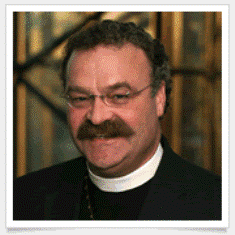


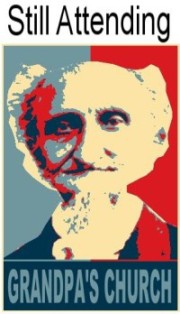










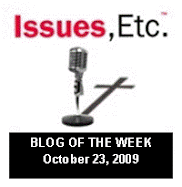
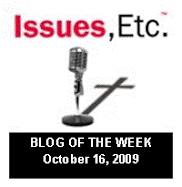

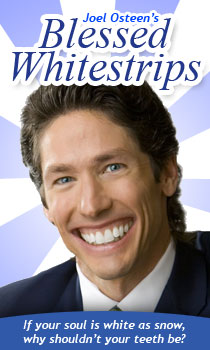
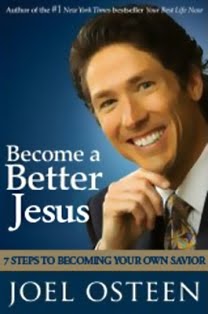


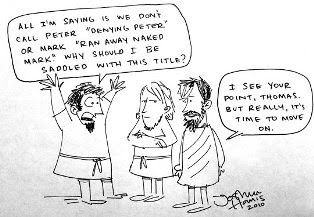
No comments:
Post a Comment